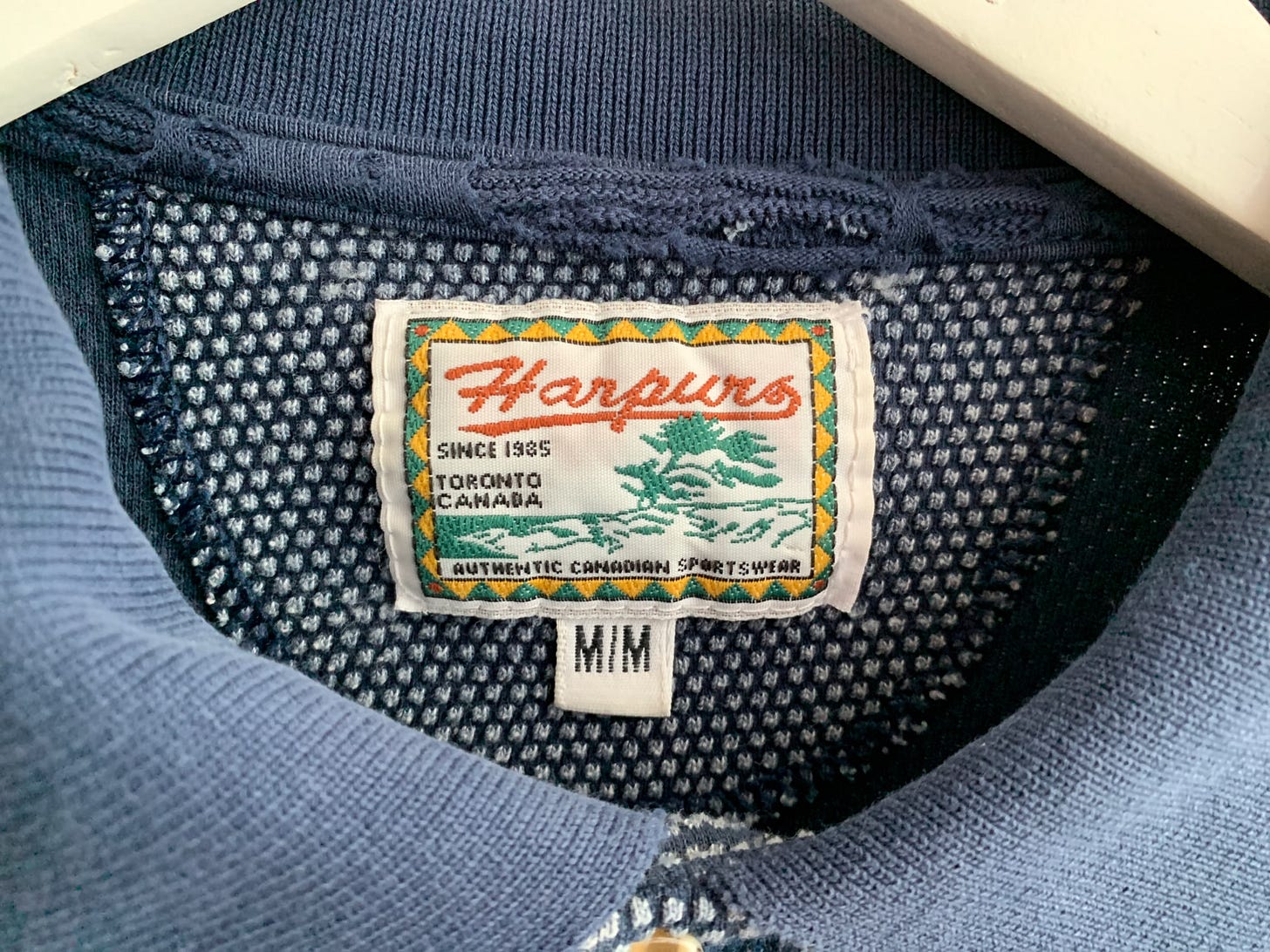I have a really old pullover shirt. It was made by a company called Harpurs. I purchased it at their company store located on Yonge Street just north of Eglinton back in the early 1990s. They offered a selection of made-in-Toronto leisure and outdoor clothing. The fabrics used were a little heavier and their products were more expensive than what you might find in department stores but their clothes lasted a long time. A number of other shirts and pants from Harpurs have gone to that fabric mill in the sky but that pullover still hangs in my closet, a little ratty now. The sleeves are frayed and the collar is worn. I only wear it around the house. It’s very, very comfortable and I’m loathe to give it up.
Harpurs, like most domestic clothing manufacturing, has pretty much gone away. Canada only makes about five percent of the clothing we purchase every year. Contrast that with the early 1990s where approximately 70% of the clothing we purchased was manufactured in Canada. The North American Free Trade Agreement (NAFTA) in 1994 lifted tariffs on clothing in the North American market leading to a flood of cheaper goods flowing into Canada from the United States and Mexico. Then, in 2005, Canada lifted the remaining tariffs on clothing for the rest of the world, leading to a catastrophic drop in domestic manufacturing. From 2003 to 2006 alone, the sector lost more than $3 billion in manufacturing shipments.
The argument in favour of removing trade barriers is that the market will decide the best distribution of capital, labour and investment. Left to its own devices, the free market will lift everyone’s economic status.
That’s not what happened. We ended up with children employed in sweatshops making our $5 t-shirts. Or workers toiling in buildings that are unsafe with little regard to health and safety or structural integrity. Fast fashion, the industry code for disposable clothing, feeds a voracious public appetite for cheap goods.
Then the pandemic hit. Supply chains were interrupted. Clothing, along with microchips, toilet paper and other goods became scarce. This plus the war in Ukraine meant that global supply chains for just-in-time delivery of source materials were interrupted. Countries started wielding economic power to benefit political power. Russia tried to quash European support of Ukraine by withholding natural gas supplies. China restricts access to its market if countries fail to reciprocate. Trading has become the whipping boy for negotiation and political leverage.
This uncertainty has resulted in companies finding alternatives to importing from the cheapest supplier. Instead of purchasing N95 masks from China who might withhold them to get a favourable result with an unrelated negotiation, make them in Brockville, Ontario. Instead of risking empty store shelves, purchase clothing made closer to home.
If you can purchase something cheaply it’s hard to resist. Money is tight. Inflation is still higher than it should be. Food prices are ridiculous with record profits for the grocery stores. But if you can’t get something at all because another country holds an industry hostage to bend us to their will, then the cost of that item becomes far more expensive than just the price tag.
I’m not sure Canadian companies can sell a crew-neck shirt for $95 when you can find something similar but likely not as well-made at Walmart for $19. But then again, I’ve had 30+ years of use from my pullover. Maybe it’s time to look at clothing as a durable good rather than something to discard after a season’s use. And maybe it’s time to double check where it’s made to ensure that we have shirts to wear in the future.
We’ve had some amazing evening views these past few months.







It's near impossible to purchase anything that's made in Canada any more. If I limited my purchases to Made In Canada, I'd be broke and/or involuntarily minimalist. Meanwhile, our money supports countries with dismal human rights records.